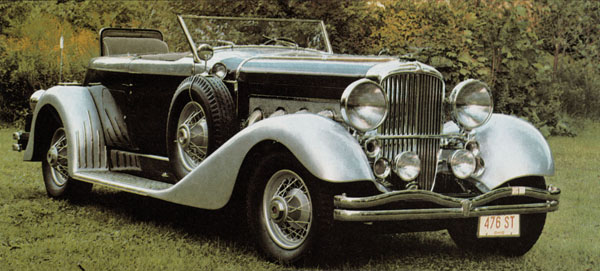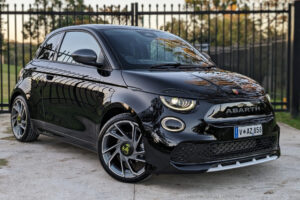The Duesenberg had an eight-cylinder in-line, twin overhead camshaft, 6882cc supercharged engine that enabled it to reach 113km/h in first gear, 160km/h in second and 225km/h in top. Mildly tuned versions were capable of a top speed of 260km/h, an almost unheard of speed 65 years ago. To house this power was a 2,500kg body which had four seats. Usually only three were occupied: a chauffeur in front and the owner and his, or her, chosen companion. Such cars were usually the choice of film stars, diplomats, gangsters and political bosses, all incredibly rich and very discerning.
Four hundred and eighty of these Duesenbergs were built in both supercharged SJ or normally aspirated J specification. The fabulous Duesenberg engine, lifted almost unaltered from racing cars good enough to win the most gruelling Indianapolis event, was built by Lycoming to improve the status of the old straight-eights that were used to power Cord’s bargain-basement Auburns.
One would think that a car in such demand and selling at a top price would be a real money spinner but such was not the case as Duesenberg never made money. The problem was due to cost. Not only the outward components but every part used in the body, chassis, engine and interior was the best available. Their manufacturing cost was so high that even when sales were at their peak income only just covered material costs with no allowance for overheads.
These cars were expected to last a lifetime and even today models still in use show every sign of lasting forever. And so they should with most of the engine made from machine-turned solid aluminium forgings, the chassis from chrome steel and the generous use of stainless steel fittings throughout.
Even coachbuilders scrambled to obtain the privilege of building a special one-off body on a Duesenberg chassis for wealthy customers who also demanded a load of exclusive features designed to outdo all their rivals. Because of the individual nature even then they didn’t make money but this didn’t really matter since the building of a Duesenberg body to an American coachbuilder was the closest thing to claiming Royal patronage.
This engineering excellence also gave the car a standard of performance which was much admired by the motoring press. In spite of the car’s heavy weight they stopped very well, unlike other American cars, due to the size of their finned and power-assisted brakes. And they weren’t slow off the mark either. The supercharged SJ version could accelerate from rest to 160km/h in just 17 seconds. In fact the SJ has been described by many as `The Finest Car in the World’ and certainly deserves its place in the Top 100 list of Cars of the Century.









